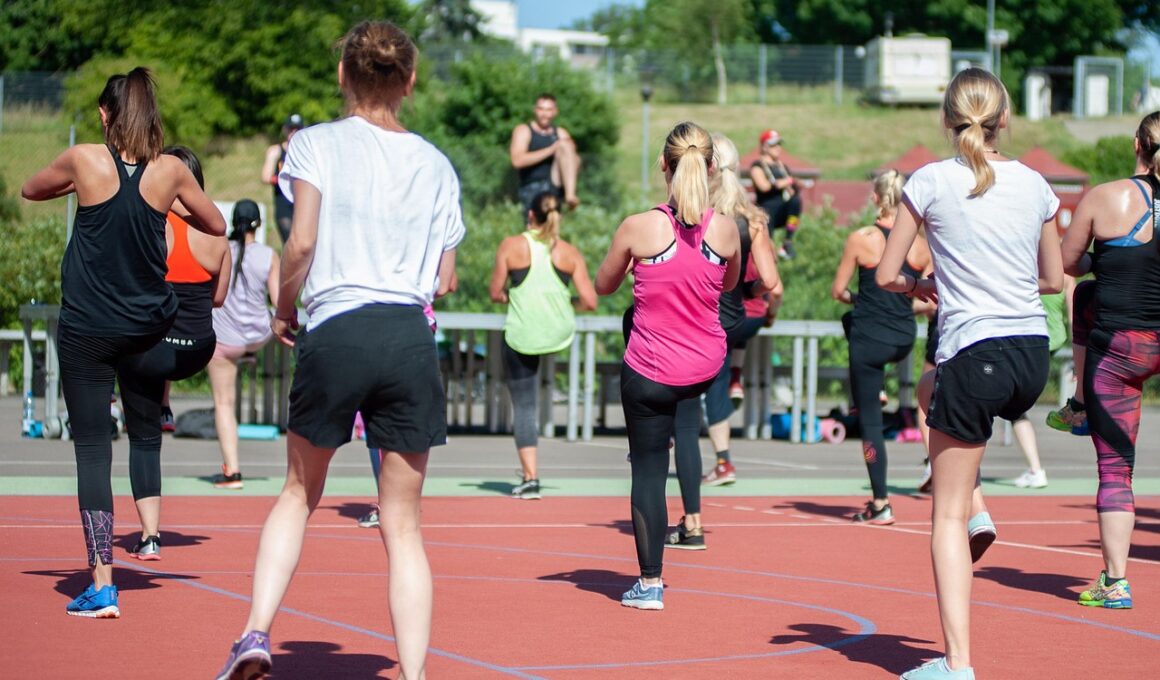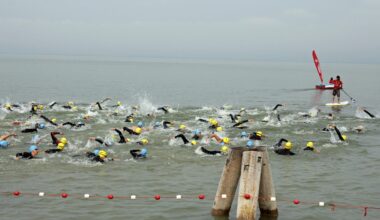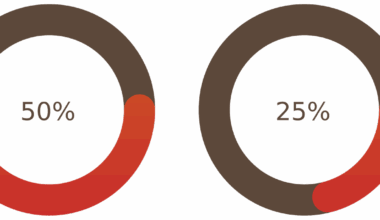Balancing HIIT and Rest: Avoiding Overtraining in Women
High-Intensity Interval Training (HIIT) has become increasingly popular among women seeking effective workout regimens. HIIT combines short bursts of intense exercise with periods of rest or lower-intensity exercise, making it an efficient way for women to burn calories and build endurance. However, the intensity of HIIT can lead to overtraining if not managed properly. Overtraining occurs when the balance between workouts and rest is disrupted, often resulting in fatigue, decreased performance, and even injury. For women, hormonal factors play a vital role in how the body responds to intense training, affecting recovery times and endurance capabilities. To avoid overtraining, it is essential to incorporate adequate rest days into a HIIT routine, allowing the body to recover and rebuild muscle fibers. Furthermore, monitoring one’s overall energy levels and performance can help identify signs of overtraining early. The focus should not solely be on intensity but rather on achieving a harmonious balance between pushing limits and ensuring sufficient recovery for optimal health and performance.
Signs of Overtraining in Women
Understanding the signs of overtraining is crucial for women who practice HIIT regularly. Common indicators include persistent fatigue, irritability, difficulty sleeping, and a decline in performance. Women may also experience increased muscle soreness or frequent injuries, which can discourage further training. Additionally, hormonal changes can manifest, including irregular menstrual cycles or mood swings linked to overtraining. It is crucial to listen to one’s body and recognize these signs, as ignoring them can lead to more profound issues. As a proactive approach, tracking workouts, sleep quality, and nutrition can provide clarity and insights into one’s physical state. Recognizing when to take a break or adjust training intensity is essential to maintaining overall fitness. Women should emphasize the importance of balanced workouts that include various training modalities alongside HIIT. Incorporating low-intensity workouts, such as yoga or walking, can facilitate recovery while still promoting cardiovascular health and muscular strength. Emphasis should also be placed on proper hydration and nutrition to support energy levels and overall well-being.
Rest days should be integrated into any HIIT schedule to provide optimal recovery for women. The frequency of these rest days can vary depending on individual fitness levels and workout intensity; however, it is generally advisable to include at least one to two rest days within a week. On these days, lighter activities like stretching or leisurely walking can aid recovery without exerting excess energy. Additionally, scheduling a deload week—or a period of reduced training intensity—can allow the body to recuperate and restore balance. During deload weeks, women’s bodies can adapt to earlier training loads, reducing the risk of injury and burnout. Furthermore, prioritizing sleep is fundamental for recovery, as it facilitates muscle repair and overall bodily function. Engaging in relaxation techniques and managing stress can further enhance recovery. Quality sleep contributes positively towards hormone regulation, particularly for stress hormones that can escalate with intense training. In summary, a well-structured HIIT program for women must include designated time for recovery and rest to promote longevity and sustainable fitness.
Nutrition’s Role in HIIT
The significance of nutrition cannot be overstated in supporting HIIT performance and recovery, especially for women. Optimal nutrition provides the necessary fuel to power through intense workouts while also promoting healing post-exercise. Micronutrients and macronutrients play distinct yet crucial roles in energy production and muscle repair. Women who engage in HIIT should prioritize a diet rich in complex carbohydrates, lean proteins, and healthy fats. Carbohydrates serve as an essential energy source, while protein intake helps facilitate muscle recovery and growth. It is vital to consume nutrient-dense meals, including fruits, vegetables, and whole grains, to support overall health. Hydration also plays a pivotal role in performance; adequate fluid intake ensures optimal function during workouts and assists in recovery. Additionally, pre- and post-workout nutrition influences energy levels and muscle synthesis. Consuming a balanced meal or snack before exercise can steady energy levels, while post-workout nutrition helps replenish depleted glycogen stores. In sum, pairing a well-balanced diet with HIIT can significantly enhance outcomes for women, helping improve performance, endurance, and recovery.
Integrating mobility and flexibility training into a HIIT routine can be extremely beneficial in preventing overtraining. Women often neglect these essential components, leading to tight muscles, reduced range of motion, and increased chances of injury. Adding dynamic stretches or flexibility exercises before and after HIIT sessions promotes blood flow and reduces soreness. Low-impact practices like yoga not only develop flexibility but also improve mental focus and relaxation necessary for recovery. Furthermore, participating in mobility exercises or functional training can enhance overall performance, allowing for greater efficiency during HIIT workouts. Emphasizing strength imbalances or areas of tightness ensures workouts are safer and more effective. Listening to one’s body during workouts also protects against overtraining; modifying exercises or taking breaks during sessions might be necessary when fatigue sets in. This adaptive approach helps maintain motivation and enjoyment in fitness. Additionally, developing a personal warm-up and cool-down routine tailored to individual needs can further support recovery. Ultimately, complementing HIIT with mobility-focused exercises fosters a holistic approach to fitness for women.
Psychological Aspects of HIIT
Undoubtedly, the psychological component of training reflects a woman’s workout experience. The rush of endorphins from intense training can create an addictive atmosphere, making it easy to push through pain or fatigue. However, this desire for quick results can cause women to overlook the signs of overtraining. It’s essential to maintain a balanced mindset towards fitness. Cultivating patience and understanding the body’s limits can help foster a more positive relationship with exercise. Establishing realistic goals based on individual strengths and weaknesses allows for steady progress without added pressure. Additionally, focusing on the enjoyment of movement serves as an intrinsic motivator rather than a sole focus on metrics like weight loss. Finding a supportive community encourages commitment to fitness educators and fellow exercisers, creating a knowledgeable environment where women can share experiences. Seeking professional guidance or coaching can further elevate workout plans to align with personal health goals effectively. Thus, recognizing the psychological aspects that contribute to overtraining ensures a healthier approach towards HIIT for women.
In conclusion, balancing HIIT and rest is paramount for women to avoid overtraining. A well-structured fitness plan considers the intensity of workouts, underscores the importance of adequate rest and recovery, prioritizes nutrition, acquires psychological strategies, and incorporates mobility training. By being mindful of personal limits and consistently listening to one’s body, women can effectively navigate their HIIT journeys. The commitment to both rest and effort ultimately leads to improved performance, enhanced longevity in training, and a lifelong enjoyment of fitness. Embracing this equilibrium nurtures a healthier, happier lifestyle while amplifying the benefits of HIIT. By instilling balance in workout regimes, women are encouraged to embrace their fitness journeys with positivity and sustainability. A supportive community, positive mindset, and proper nutritional choices provide the tools necessary to succeed. This approach facilitates building strength, stamina, and mental resilience. Therefore, taking the time to plan rest days, incorporating diverse workouts, and emphasizing recovery are fundamental elements in avoiding overtraining while improving overall HIIT experiences. Women can thrive in their fitness pursuits by acknowledging these essential aspects, ensuring enjoyment and success in their training.


